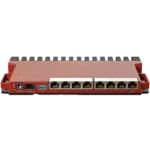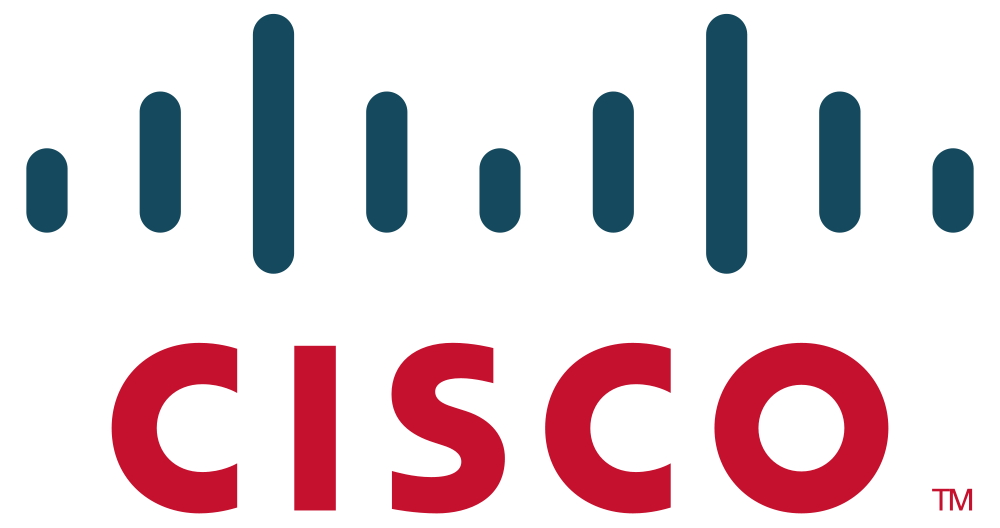In this article, we aim to provide a comprehensive guide to all the Essential commands you need to manage and configure Cisco switches effectively. Whether you are a network administrator or a technician looking to streamline your tasks, this collection of essential commands will help you handle everyday operations, troubleshoot issues, and optimize your network’s performance. From basic configuration steps to advanced troubleshooting, these commands cover a wide range of functions for maintaining Cisco switches efficiently.
User Modes in Cisco Switches: Understanding Access Levels (Modes)
In Cisco switches, different user modes, or privilege levels, define the level of access a user has to various commands and configuration options. Understanding these modes is essential for managing the switch efficiently. Here are the primary modes:
1. User EXEC Mode (Basic Mode)
- Prompt:
Switch> - Access: This is the default mode when a user first logs into the switch. It allows basic monitoring commands, such as checking the status of interfaces, but no configuration changes can be made.
- Commands: Basic diagnostic commands like
ping,show, andtraceroute.
2. Privileged EXEC Mode (Enable Mode)
- Prompt:
Switch# - Access: From User EXEC mode, typing the
enablecommand moves the user to Privileged EXEC mode. In this mode, the user has access to more advanced monitoring commands and the ability to view configuration settings, but cannot make changes to the configuration. - Commands: Includes all User EXEC mode commands, plus more advanced diagnostic commands like
show running-config, and commands for debugging and file manipulation.
3. Global Configuration Mode
- Prompt:
Switch(config)# - Access: By typing
configure terminalfrom Privileged EXEC mode, the user enters Global Configuration mode, where they can make changes to the overall configuration of the switch. - Commands: This mode allows users to change settings such as IP addressing, hostname, and security settings.
4. Interface Configuration Mode
- Prompt:
Switch(config-if)# - Access: In this mode, the user can configure specific interfaces (e.g., FastEthernet, GigabitEthernet). It is accessed from Global Configuration mode by specifying an interface using commands like
interface GigabitEthernet 0/1. - Commands: Allows configuring interface-specific settings like IP addresses, VLANs, and duplex modes.
5. VLAN Configuration Mode
- Prompt:
Switch(config-vlan)# - Access: This mode is used to configure Virtual LANs (VLANs). It is entered from Global Configuration mode by using the command
vlan databaseorvlan vlan_id. - Commands: Used to assign VLAN IDs, configure VLAN names, and more.
6. Line Configuration Mode
- Prompt:
Switch(config-line)# - Access: Accessed from Global Configuration mode using the
linecommand (e.g.,line console 0orline vty 0 4), this mode configures line-specific settings such as password protection and timeout settings. - Commands: Typically used to configure console or virtual terminal (VTY) lines for remote access and login security.
Each mode serves a specific purpose, and understanding when and how to use them allows for more efficient management and security of the switch.
| Mode | Command | Description |
|---|---|---|
| User EXEC Mode | show version | Displays the current software version and system uptime. |
show interfaces | Shows the status and statistics of all switch interfaces. | |
ping [IP address] | Sends ICMP echo requests to verify network connectivity. | |
traceroute [IP address] | Traces the route packets take to the destination. | |
| Privileged EXEC Mode | enable | Enters Privileged EXEC mode. |
show running-config | Displays the current active configuration. | |
copy running-config startup-config | Saves the current configuration to be used at the next boot. | |
debug [command] | Enables debugging for a specific protocol or function. | |
reload | Restarts the switch. | |
| Global Configuration | configure terminal | Enters Global Configuration mode. |
hostname [name] | Sets the hostname of the switch. | |
interface [type] [number] | Enters the configuration mode for the specified interface (e.g., GigabitEthernet0/1). | |
ip address [IP address] [mask] | Assigns an IP address to an interface. | |
no shutdown | Activates an interface. | |
| Interface Configuration | switchport mode access | Configures an interface as an access port. |
switchport mode trunk | Configures an interface as a trunk port. | |
switchport access vlan [vlan-id] | Assigns an access port to a specific VLAN. | |
duplex full | Sets full-duplex mode for an interface. | |
speed 1000 | Sets the interface speed to 1000 Mbps. | |
| VLAN Configuration | vlan [vlan-id] | Creates a new VLAN or enters VLAN configuration mode for the specified VLAN. |
name [vlan-name] | Assigns a name to the VLAN. | |
| Line Configuration | line console 0 | Enters console line configuration mode. |
line vty 0 4 | Configures virtual terminal lines for remote access. | |
password [password] | Sets a password for the specified line. | |
login | Enables password checking at login for the line. |
Essential Cisco Switch Troubleshooting Commands
| Command | Description | Mode |
|---|---|---|
show running-config | Displays the current active configuration. | Privileged EXEC |
show startup-config | Shows the configuration that will be used on the next reboot. | Privileged EXEC |
show interfaces | Displays detailed information about all interfaces, including status and errors. | Privileged EXEC |
show ip interface brief | Provides a quick overview of all interfaces, IP addresses, and their statuses. | Privileged EXEC |
show vlan brief | Lists all VLANs and the associated ports. | Privileged EXEC |
show mac address-table | Displays the MAC address table and the corresponding ports. | Privileged EXEC |
show spanning-tree | Verifies the spanning tree status and potential loops. | Privileged EXEC |
show log | Shows system log messages (logs of events and errors). | Privileged EXEC |
show version | Displays software version and system hardware details. | Privileged EXEC |
show processes cpu | Displays CPU utilization by different processes on the switch. | Privileged EXEC |
show processes memory | Displays memory utilization details. | Privileged EXEC |
show ip route | Displays the routing table and verifies routes. | Privileged EXEC |
ping [IP address] | Tests connectivity to a specific device or destination. | User/Privileged EXEC |
traceroute [IP address] | Traces the path packets take to a destination, identifying hops. | User/Privileged EXEC |
show cdp neighbors | Displays neighboring devices discovered via Cisco Discovery Protocol (CDP). | Privileged EXEC |
debug [protocol/process] | Enables real-time debugging for specific protocols or processes. | Privileged EXEC |
show controllers | Displays hardware-specific information (e.g., transceiver details). | Privileged EXEC |
clear counters | Resets interface counters to help isolate new errors or issues. | Privileged EXEC |
show power inline | Verifies PoE status and power consumption on PoE-enabled ports. | Privileged EXEC |
show environment | Checks system environmental status (e.g., temperature, power supplies). | Privileged EXEC |
| Command | Description | Mode |
|---|---|---|
| VLAN Commands | ||
vlan [vlan-id] | Creates a VLAN with the specified ID. | Global Configuration |
name [vlan-name] | Assigns a name to the created VLAN. | VLAN Configuration |
show vlan brief | Displays a summary of all VLANs and their associated interfaces. | Privileged EXEC |
interface vlan [vlan-id] | Enters interface configuration mode for the specified VLAN. | Global Configuration |
switchport mode access | Sets the port to access mode (used for connecting end devices). | Interface Configuration |
switchport access vlan [vlan-id] | Assigns the port to a specific VLAN. | Interface Configuration |
switchport mode trunk | Configures a port as a trunk to carry multiple VLANs. | Interface Configuration |
switchport trunk allowed vlan [vlan-list] | Specifies which VLANs are allowed on a trunk. | Interface Configuration |
show interfaces trunk | Displays trunk ports and allowed VLANs on those trunks. | Privileged EXEC |
no vlan [vlan-id] | Deletes a VLAN. | Global Configuration |
| Routing Commands | ||
ip routing | Enables IP routing on the switch. | Global Configuration |
ip route [destination] [mask] [next-hop] | Adds a static route to the routing table. | Global Configuration |
show ip route | Displays the IP routing table. | Privileged EXEC |
interface [interface-id] | Enters interface configuration mode. | Global Configuration |
ip address [ip] [subnet-mask] | Assigns an IP address to an interface. | Interface Configuration |
show ip interface brief | Displays a summary of IP interfaces and their statuses. | Privileged EXEC |
router ospf [process-id] | Enables OSPF routing with the specified process ID. | Global Configuration |
network [network] [wildcard-mask] area [area-id] | Defines OSPF networks. | OSPF Configuration |
router bgp [asn] | Configures BGP routing with a specific autonomous system number. | Global Configuration |
neighbor [ip] remote-as [asn] | Adds a BGP neighbor with the specified IP and ASN. | BGP Configuration |
show ip protocols | Displays information about routing protocols in use. | Privileged EXEC |
clear ip route * | Clears the routing table. | Privileged EXEC |
show ip bgp summary | Displays a summary of BGP neighbors and status. | Privileged EXEC |
Conclusion
Conclusively, proficient comprehension and application of the diverse commands and configurations Cisco switches are essential for effective network administration and troubleshooting. Detailed tables covering useful instructions for Cisco switches, such as VLAN configuration, routing, and DHCP administration, have been included in this page. Furthermore, we have examined crucial troubleshooting instructions that aid in the accurate diagnosis and resolution of network problems.
Network managers can maintain dependable IP address allocation, optimize switch performance, and guarantee appropriate network segmentation by becoming proficient with these procedures. Better control over network operations is made possible by the practical application of these commands, which eventually results in a more reliable and effective network architecture.
Knowing these key commands will help you manage and troubleshoot Cisco switches more efficiently, whether you are configuring VLANs, handling routing protocols, or DHCP services.




















